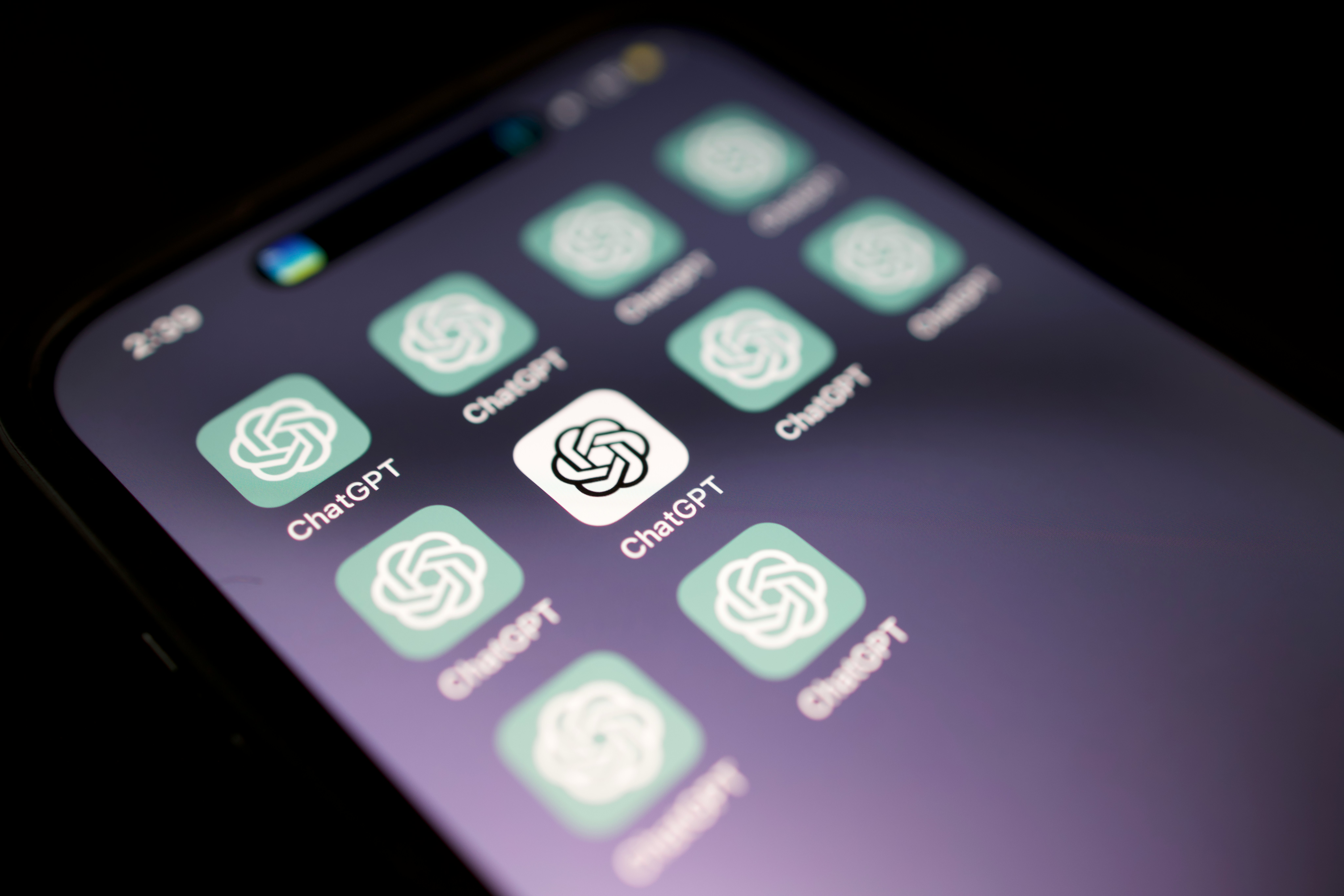
If you want your business to be recommended by LLMs, and appear in AI Overviews, then you need to double down on digital PR. Or start investing in it if you’re not already.
And no, I’m not just saying this because I’m the founder of a digital PR agency.
Keep reading and you’ll see all the examples you need to understand why digital PR, or the brand signals that it drives, is a fundamental part of being visible in this new era of search.
- AI-powered search rewards brand signals, not just links.
Traditional SEO tactics alone won’t earn you visibility in tools like Google’s AI Overviews or ChatGPT. These platforms pull from both real-time content and model training data, and they’re more likely to recommend brands they recognise and trust, which means digital PR-driven brand mentions matter more than ever. - You need two digital PR tracks: for SEO and AI-powered search visibility.
In 2025, it’s not enough to do PR for link-building alone. You need a dual-track approach: one to support traditional search rankings with earned links, and another to influence AI-driven recommendations through earned media, brand mentions, and a presence in authoritative third-party content. - It’s about the right mentions, not just more mentions.
Earning more mentions won’t drive AI visibility. What matters is where and how you’re mentioned. Being featured in relevant content, product roundups, and niche expert content increases your chance of being cited or recommended by AI tools pulling from search engines or its training data. - Digital PR shapes the narrative AI uses to recommend you.
LLMs build their understanding of your brand from what others say about you across the web. Appear in the right press, roundups, and expert content, and you influence how the AI describes your brand, not just whether it mentions you. This is how you move from being discoverable to being recommended. - Want your brand to be recommended by AI? Work with experts who are already making it happen.
At Digitaloft, we’ve already helped many brands to earn coverage that directly leads to AI recommendations. If you want to start showing up in AI Overviews and LLM answers, not just the SERPs, we’ll build the kind of digital PR strategy that makes it happen. Let’s talk.
Here’s the thing…
The strategy that’s going to drive visibility in LLMs and AI Overviews isn’t going to look the same as the strategy that’s been driving visibility on the traditional SERPs for the last few years.
Digital PR is an umbrella term. It’s a wrapper for a number of different tactics like data-driven campaigns, reactive PR, proactive expert insights PR, product PR and even unlinked brand mention management.
Tactics on their own, though, don’t mean much.
And they need to be leveraged as part of a strategy. Otherwise you’re just throwing shit at the wall and hoping something sticks. Strategy is what you’re going to do and why, tactics is how you’ll do it.
It’s now more important than ever to set clearly defined goals for digital PR and know what it is you’re trying to achieve and what a successful outcome looks like. Just ‘doing digital PR’ isn’t going to cut it if you want to be recommended by LLMs.
Digital PR is still a key contributor to traditional SEO success, don’t get me wrong. But you can’t just roll out the same strategy you’ve been using for the last few years and expect it to earn you visibility in AI-powered search platforms. At least, not unless the way you’ve been running digital PR aligns with what’s now needed.
Why your digital PR strategy needs splitting up into two tracks of work…
Don’t fall for the hype that you just need to be doing digital PR in a general sense if you want to be recommended in the new era of search.
I’ve spent the last few months researching and testing the types of earned placements that do and don’t influence visibility, and what’s clear is that you need to chase certain types of coverage over others.
But this shouldn’t come at the expense of the types of activity that earn the links and mentions you need to compete on the SERPs. In 2025, you need to be running two tracks of digital PR work… one that’s set up to influence traditional search rankings and one that’s set up to influence visibility in LLMs and AI Overviews.
Some are calling this shift Generative Engine Optimisation, or GEO, and while the term might still be finding its footing, the concept is solid… if AI-powered platforms are how users discover brands, you need to actively shape how those engines see and recommend you.
Digital PR is as important a tactic in GEO as it is SEO, it just looks a bit different.
There will be some crossover, for sure. But each track of work needs its own goals and its own roadmap.
Let me explain…
Digital PR for Traditional SEO vs Digital PR for AI Visibility
The one thing that SEOs have cared the most about from digital PR is links.
That’s not saying that digital PR doesn’t drive way more than just links, because it does.
But SEOs have mostly only cared about the links. Not the brand mentions, the referral traffic and revenue or even the increased awareness.
This isn’t because these things don’t matter or that they dismiss the importance of these things, but because links have had the biggest impact of these things on the metrics they’re measured on … performance in organic search.
The attribution problem that’s plagued digital PR
If we’re honest for a minute, why would an SEO care about affiliate links which are earned via their budget, when the outcome of that gets attributed to the affiliate team?
It opens up a whole can of worms about attribution and where certain channels should sit for them to be seen for what they’re actually worth… and that’s a whole post in itself. The attribution of digital PR has always been messy, in reality, but it’s been seen for a long time as an essential part of SEO.
For digital PR to have an influence on AI search visibility, we have to think beyond just links.
I’ve said it before and I’ll say it again. Yes, you still need links to rank in traditional search.
But just doing something for links in 2025 is going to leave gaping holes in the strategy that’s needed to be visible in LLMs, at least in a number of areas.
Wait! Before you carry on reading…here’s the commercial reality of investing into AI-powered search visibility.
Let’s bring this home in the language we all understand. Money.
Every digital activity – SEO, PR, affiliate, referral, you name it – should ultimately ladder up to one thing: revenue. And if you’re wondering how digital PR ties into that when it comes to AI-powered search, here’s a simplified flow to consider:
Mentions → Citations → LLM Visibility → Referral Traffic → Conversions
Mentions in trusted media and niche content increase the chances your brand is recognised by LLMs.
Those citations (whether via search or baked into LLM training data) put your brand in the AI’s recommendations.
This builds brand presence where it matters; in the results people are now using to make buying decisions.
Which, in turn, drives referral traffic, often from highly qualified users with commercial intent.
And yes, you guessed it; that leads to conversions, even if attribution isn’t always as clean as we’d like it to be.
Unfortunately, the legacy mindset has always been: “If it doesn’t help me rank, why should I care?”
But in 2025, ranking on traditional SERPs isn’t the only goal. Getting recommended is becoming just as important.
Yes, things are different…but they’re also very similar to how they’ve always been.
We’re all working to engineer meaningful revenue growth via organic channels, and you’re leaving money on the table (ready for your competitors to snatch) if you’re not doubling down on AI visibility right now.
What needs to change in digital PR to influence AI visibility
We need to think bigger than links; but also set up strategies that align with how the AI search platforms surface recommendations. These don’t work in the same way as traditional search does, and you need to get familiar with how digital PR plays a big role in earning visibility in these.
But there’s also narratives being pushed right now that need to be given a bit more context…
There’s been lots of research published in the last few months that shows a correlation between brand mentions and visibility in AI search, and that earned media mentions dominate citations…
- Ahrefs’ analysis of AI Overview brand visibility factors
- XFunnel’s study into the sources that AI search engines cite
But what’s not being talked about enough is that it’s not just about earning any mentions.
Don’t believe the narrative that you just need ‘more mentions’…
I can already see the narrative that’s being pushed by some digital PR agencies – “the more mentions you earn, the better your visibility will be in AI search.”
If only it was this simple.
Just as too many brands have spent budget on digital PR with a goal of increasing traditional search visibility with a mindset of “any loosely relevant link is going to help us rank higher, as long as it’s on an authoritative site,” I worry we’re going to see this cycle repeat in the new era of search, where lots of brands are led to believe that all they need is more mentions.
You need more of the right mentions.
I’m going to assume you have a general understanding of how LLMs and AI search works. I’ll touch on parts of this throughout, but the more you understand how they work, the more you’ll see how important digital PR is to earning visibility. If you want to learn more about how LLMs work, I’d recommend checking out these guides:
- How does ChatGPT work?
- How does ChatGPT choose its sources when browsing the web?
- Google AI Overviews: All You Need to Know
- How AI Mode Works and How SEO Can Prepare for the Future of Search
If you want to be visible in AI-powered search, you can’t ignore the importance of digital PR. If you’re already investing in the channel, double down. If you’re not, it’s time to start doing before your competitors overtake you!
Let’s look at when and how LLMs recommend brands (including products, services and content), and the role of digital PR within this.
Visibility in the AI’s Built-In Knowledge
Not all AI tools can browse the web. In fact, some LLMs rely entirely on what they’ve learned from their training data; a static dataset made up of website content, news articles, and other public sources (think UGC) available at the time of training.
This is how ChatGPT (without search enabled) works.
This means the model’s responses are based on its internal knowledge, not real-time information. It’s not searching the web or checking live sources, it’s generating answers based on what it knows from its training. That knowledge is baked into the model and doesn’t change unless the model is retrained or fine-tuned.
So why does this matter for digital PR?
Because when you earn brand mentions and media coverage in high-authority publications, especially those likely to be included in training datasets, you increase the chances of your brand becoming part of what the AI knows. Over time, these earned placements can influence whether an AI model references your brand when it answers questions, even if it’s not actively linking to your site.
Put simply, PR-driven brand signals help shape the way LLMs understand and talk about your business, and are one of the key off-page contributors to visibility alongside reviews and UGC mentions.
Here’s an example…
I asked ChatGPT (4o without search enabled) “I’m looking to invest in accounting software for my small business that lets me issue invoices, record spending and capture receipts. Can you recommend some options to me?”
Here’s what it returned:
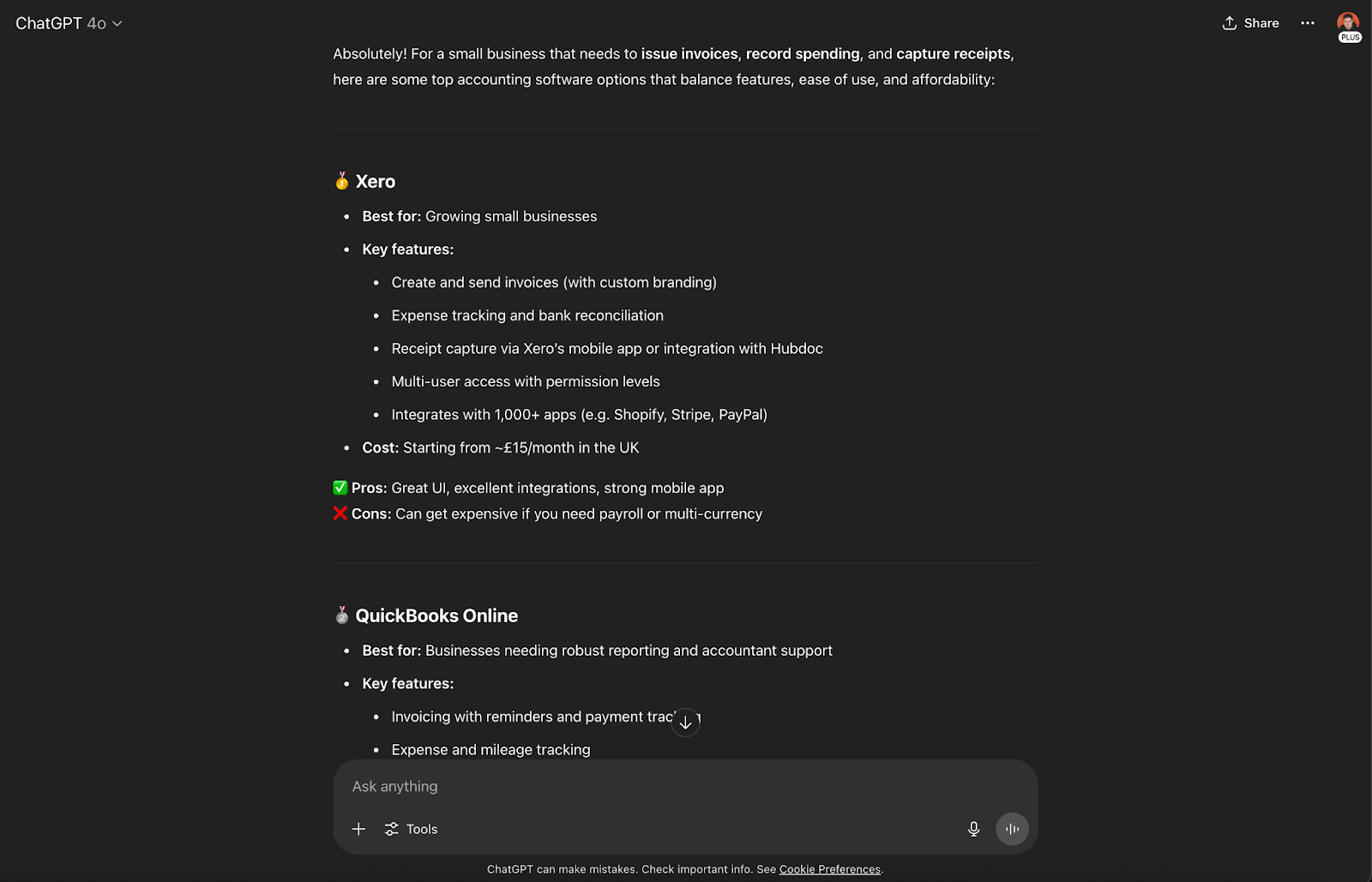
Xero and Quickbooks are being recommended here from the model’s training data. There’s no live search happening.
This means the model has determined these are most likely the best options in this case, based on what it knows from the material it’s been trained on.
These platforms have been mentioned, extensively, in this training material alongside key topics in the prompt like “accounting software” or “accounting software for small businesses.”
Ultimately, it’s PR that drives a lot of these mentions across the web.
Even though we don’t see sources listed, it’s safe to assume that inclusion in roundups like this on Startups.co.uk are playing a role within the training data and model’s knowledge.
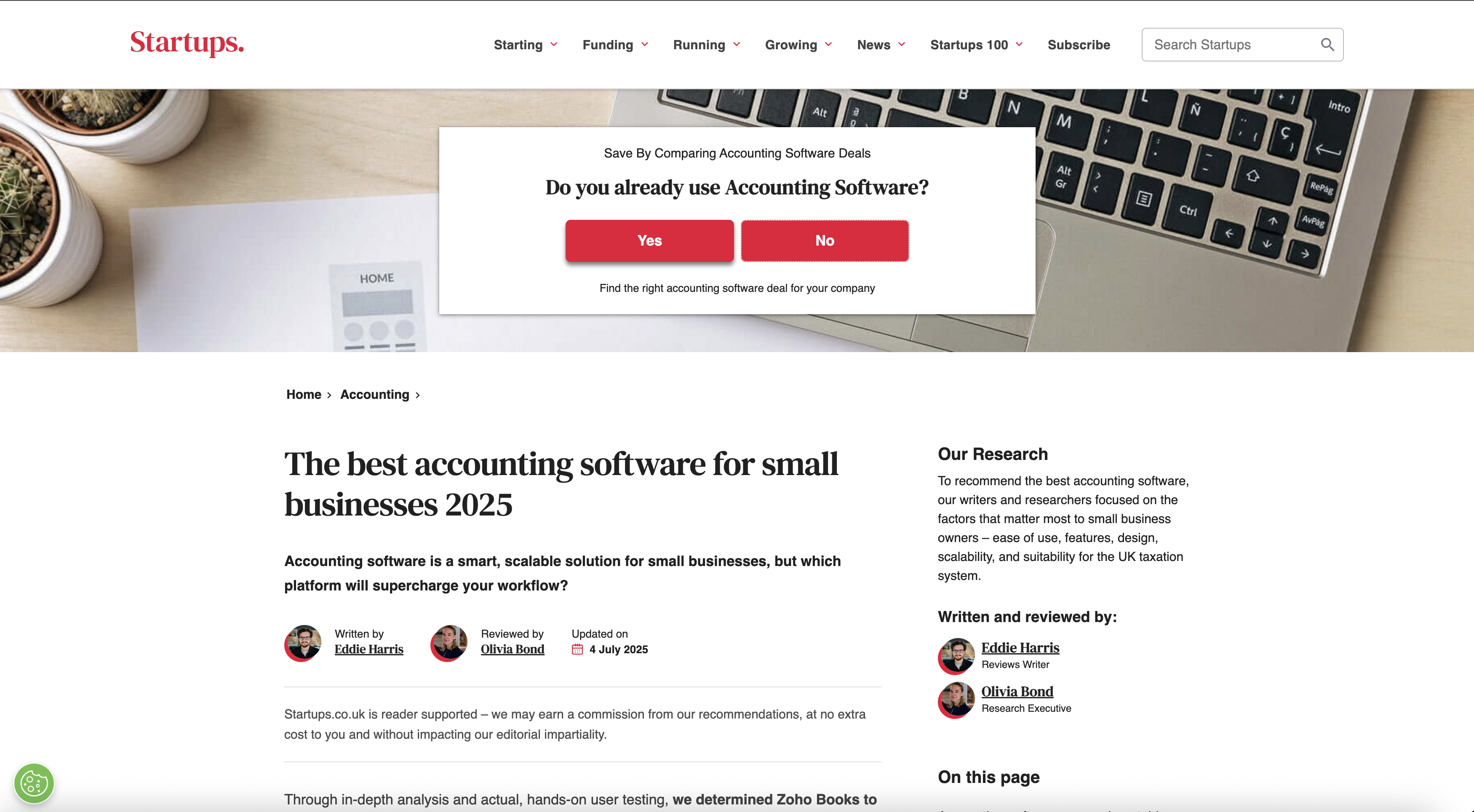
Visibility in Real-Time Answers and Citations
While some LLMs rely purely on their training data, others are connected to real-time information, pulling in fresh content from the web at the moment you ask a question.
This is how tools like Google’s AI Overviews, AI Mode or ChatGPT with search enabled work.
In these cases, the AI is generating answers by retrieving and summarising live web content, and often citing the sources it used. That means your brand can appear directly in AI-generated responses if you’ve earned coverage in or published content that gets surfaced during this real-time retrieval.
This kind of visibility is more immediate. You publish something, (or get mentioned in an article or piece of content that’s published), it gets indexed, and there’s a chance it could be pulled into an AI Overview or cited in an AI response. But not all content is treated equally.
Here’s where digital PR comes in.
When you earn coverage on high-authority sites, you’re increasing the likelihood that those pages are among the ones the AI pulls from, and that your brand appears as a cited source in answers.
But visibility here isn’t just about being indexed by the source the LLMs pull from (ChatGPT uses Bing, AI Overviews and AI Mode, obviously, use Google); it’s about being selected by the AI as the kind of source it trusts enough to include. That’s why PR coverage on trusted media sites, industry publications, and authoritative blogs matters more than ever.
Here’s an example…
I asked ChatGPT: “I want to buy a bean-to-cup coffee machine that costs less than £500.”

ChatGPT recommended three different products.
We can see why these products are recommended by viewing the sources that are cited:
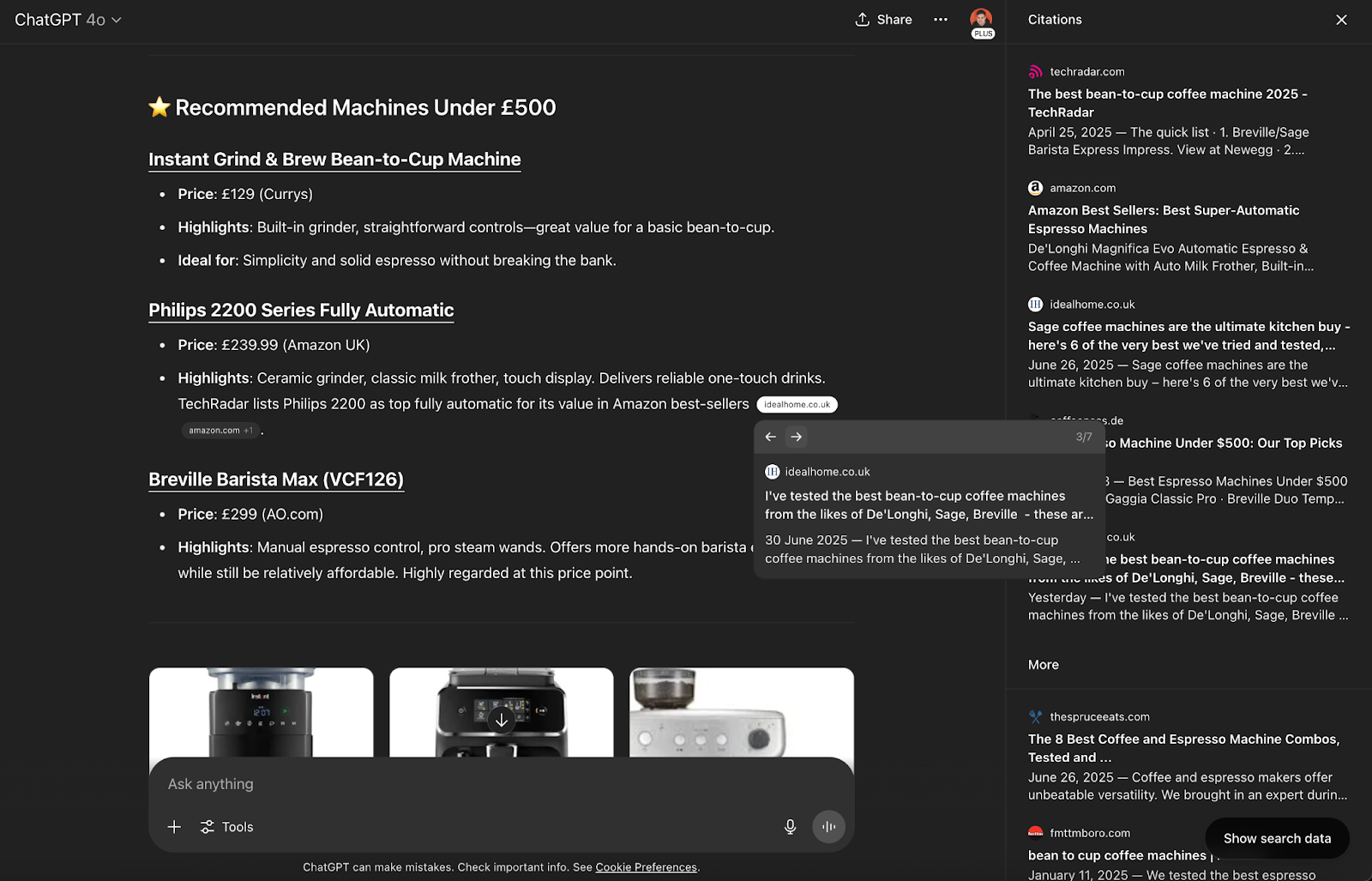
Let’s take a look at some of the sources being cited:
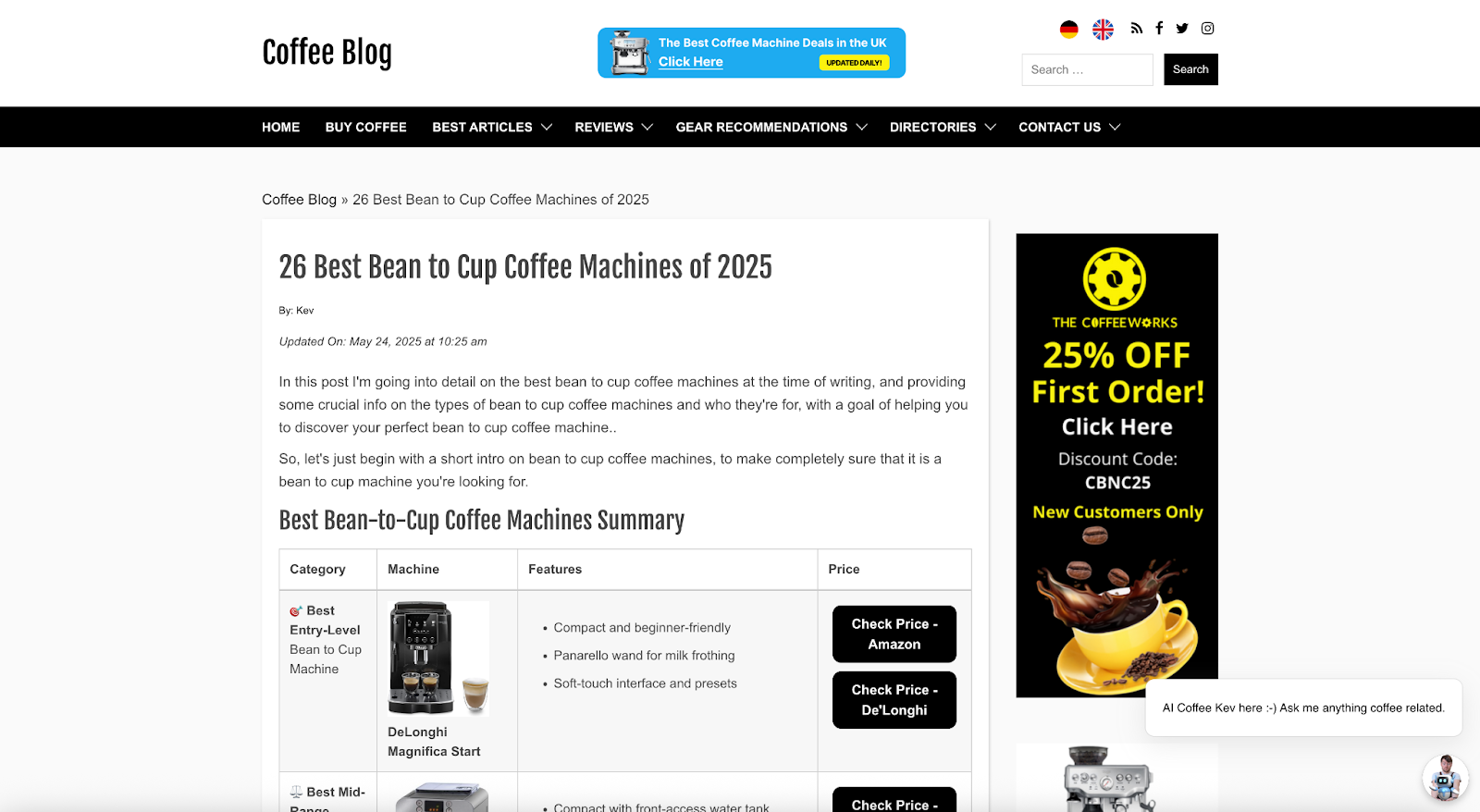
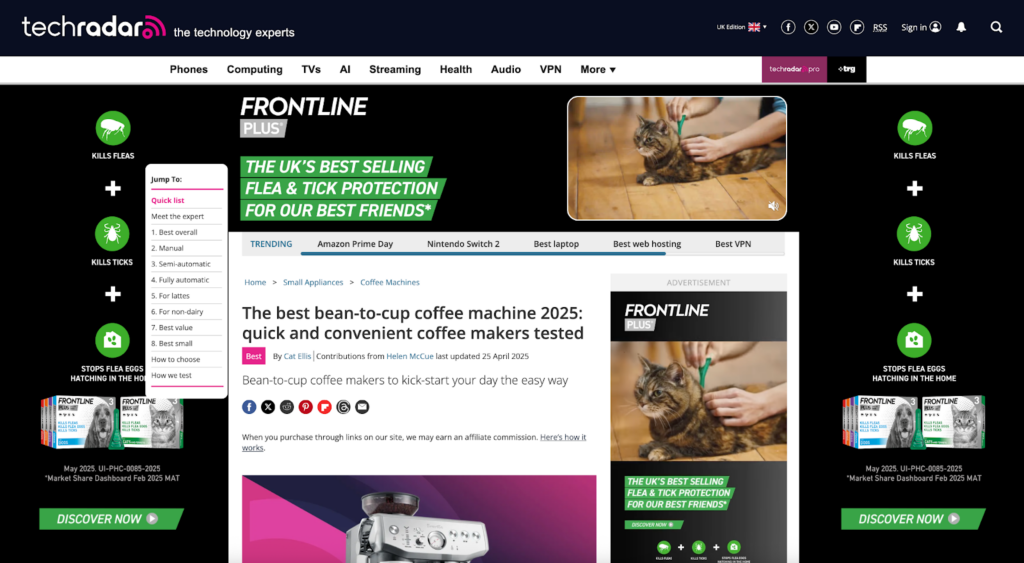
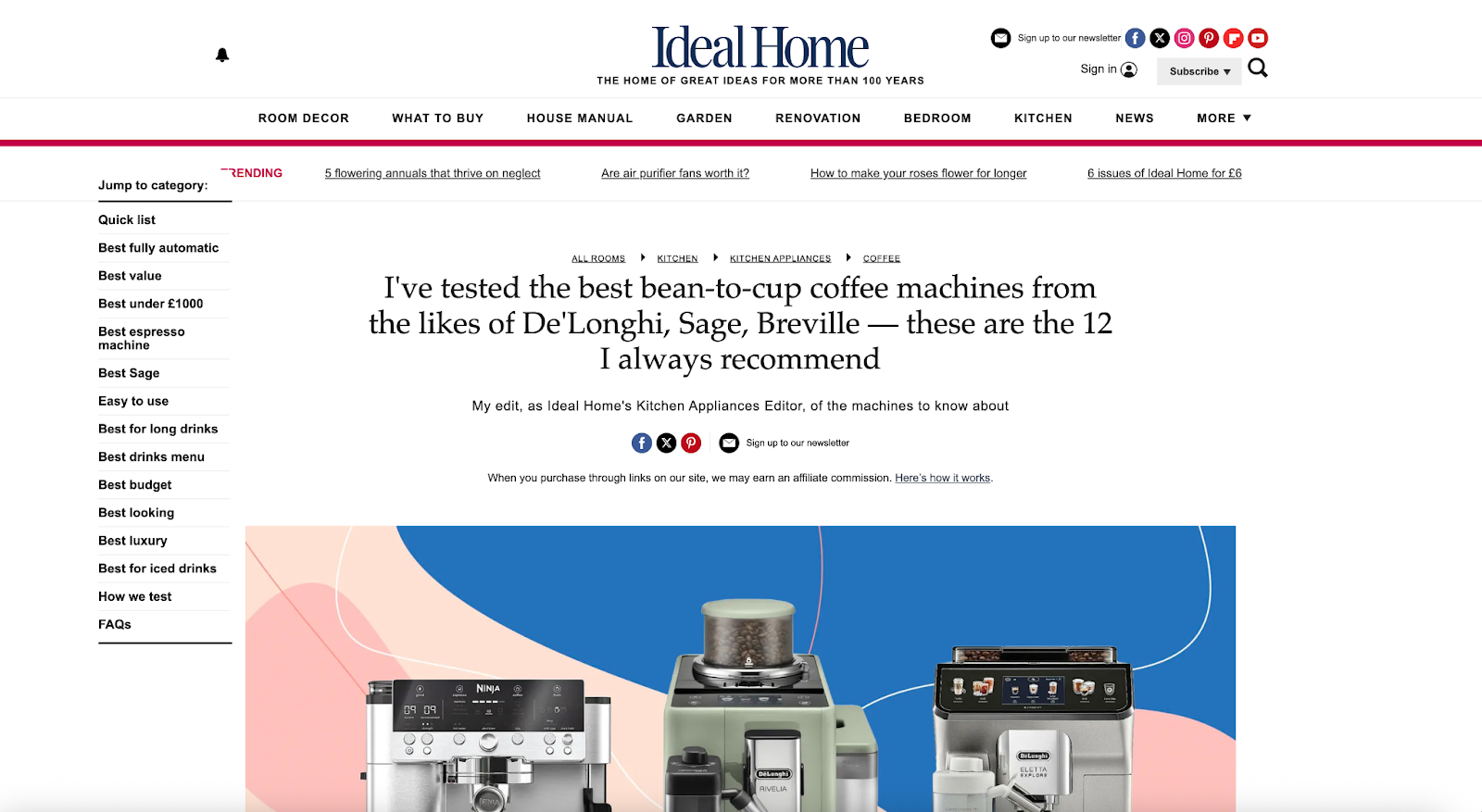
These are all review roundups on industry-specific blogs and press publications.
I can see all of the sources with the ChatGPT Search Data Extractor extension.
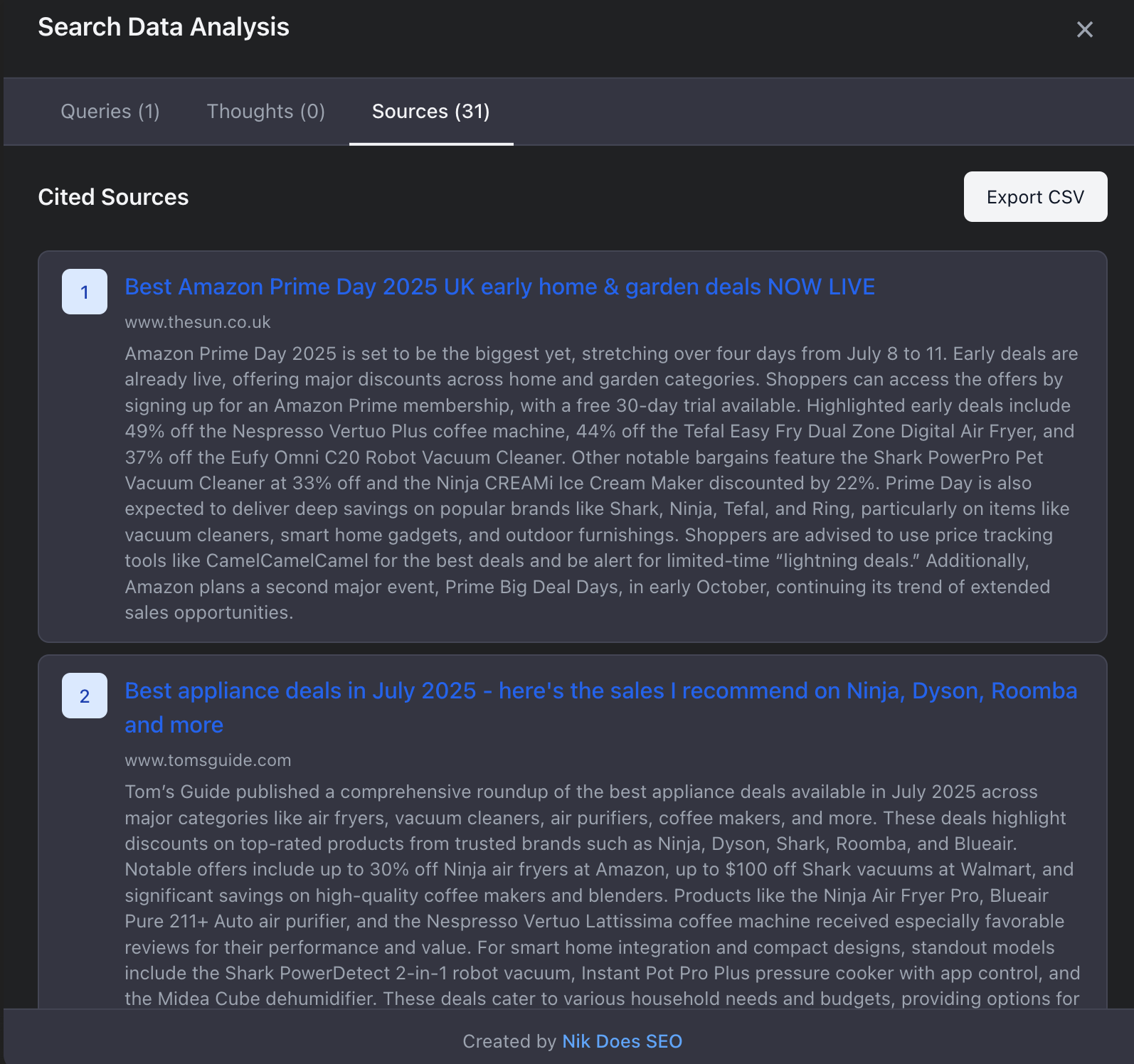
More roundups; from The Sun and Tom’s Guide.
We also see Reddit and YouTube cited as sources:

As well as a number of retailers’ PLPs:
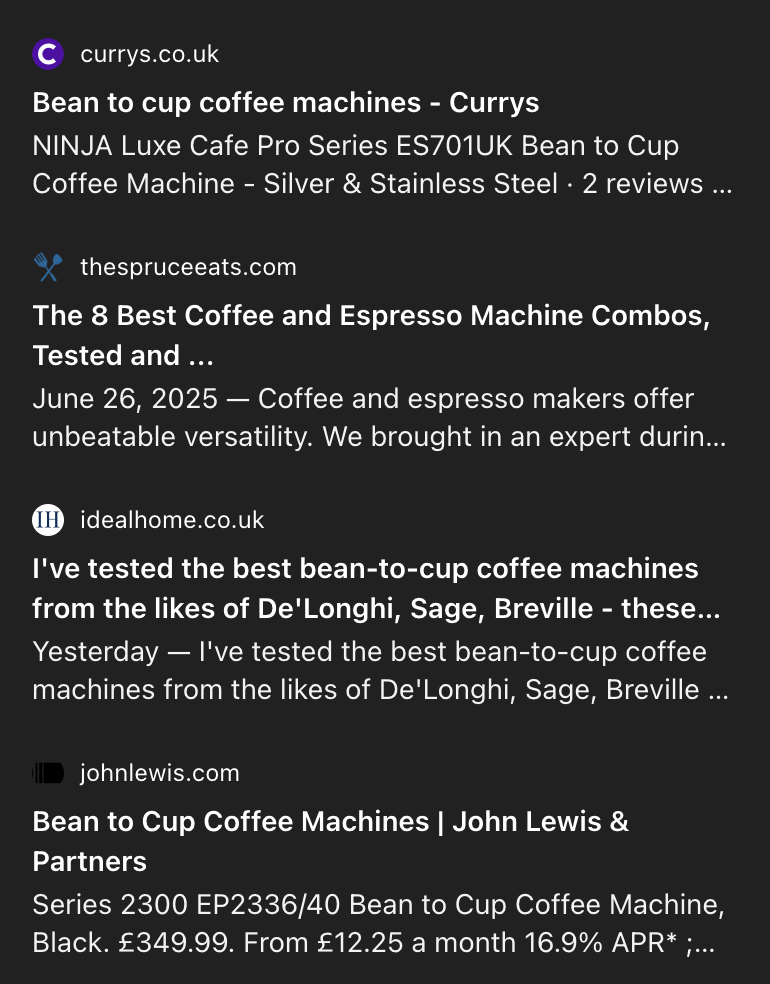
ChatGPT uses Bing as its search provider, and we can see the queries that are passed for a search using this extension. In this case, ChatGPT searched Bing for “best bean to cup coffee machine under 500 GBP.”
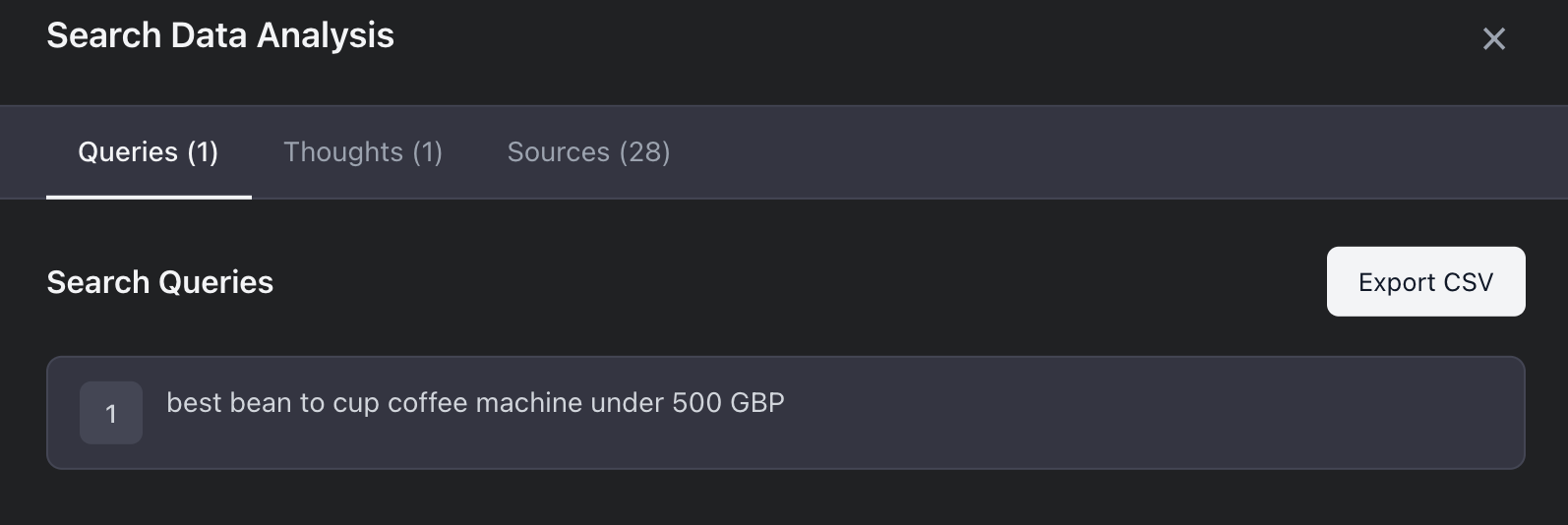
The PLPs are being cited as sources because they’re being returned by Bing for the query when a search is run.
Let’s not forget that links and mentions contribute to ranking in Bing (like Google) and, therefore, to being included in the set of sources to begin with. It’s easy for us to focus only on the way ChatGPT etc pull in sources, but we can’t overlook the fact that digital PR contributes to these sites being selected to be there in the first place.
It’s a flywheel and digital PR plays a huge part in it all.
The evidence that digital PR drives AI-powered search visibility
Here’s a piece of press coverage Digitaloft landed for our client, DeliVita Pizza Ovens.
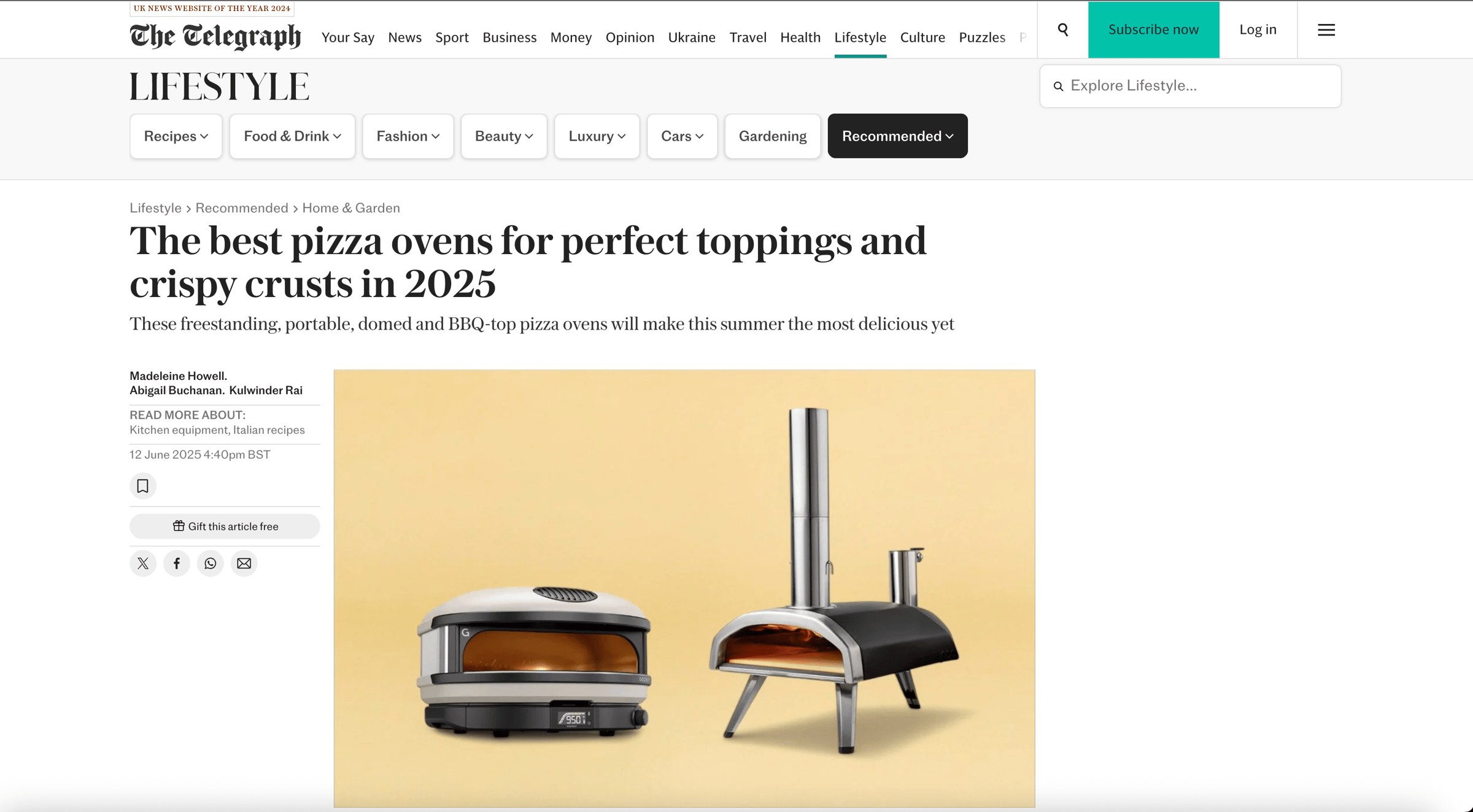
This is a product roundup on The Telegraph, reviewing the best pizza ovens.
It’s part of a wider push we’re having to get this brand’s products recommended by LLMs.
And look who ChatGPT is recommending:
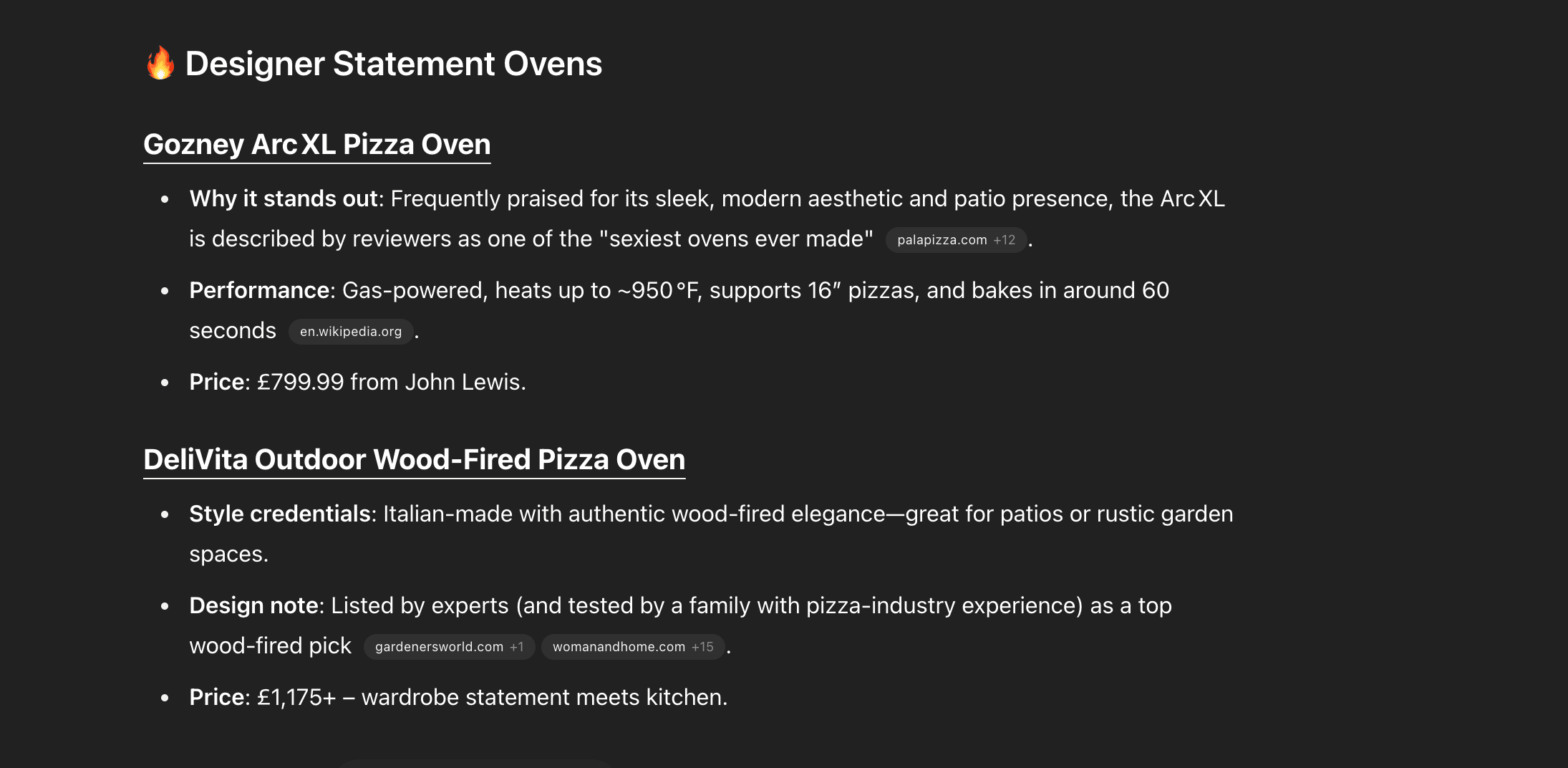
Our client DeliVita, of course.
They’re a high-end option, and it’s a real testament of our strategy that their products are being cited as ‘designer statement ovens’ in LLMs.
Wanna see more?
We recently landed our client, GO Outdoors, in a roundup, again on The Telegraph (this appears to be a key source that’s used by ChatGPT), of the best tents for camping trips and festivals.
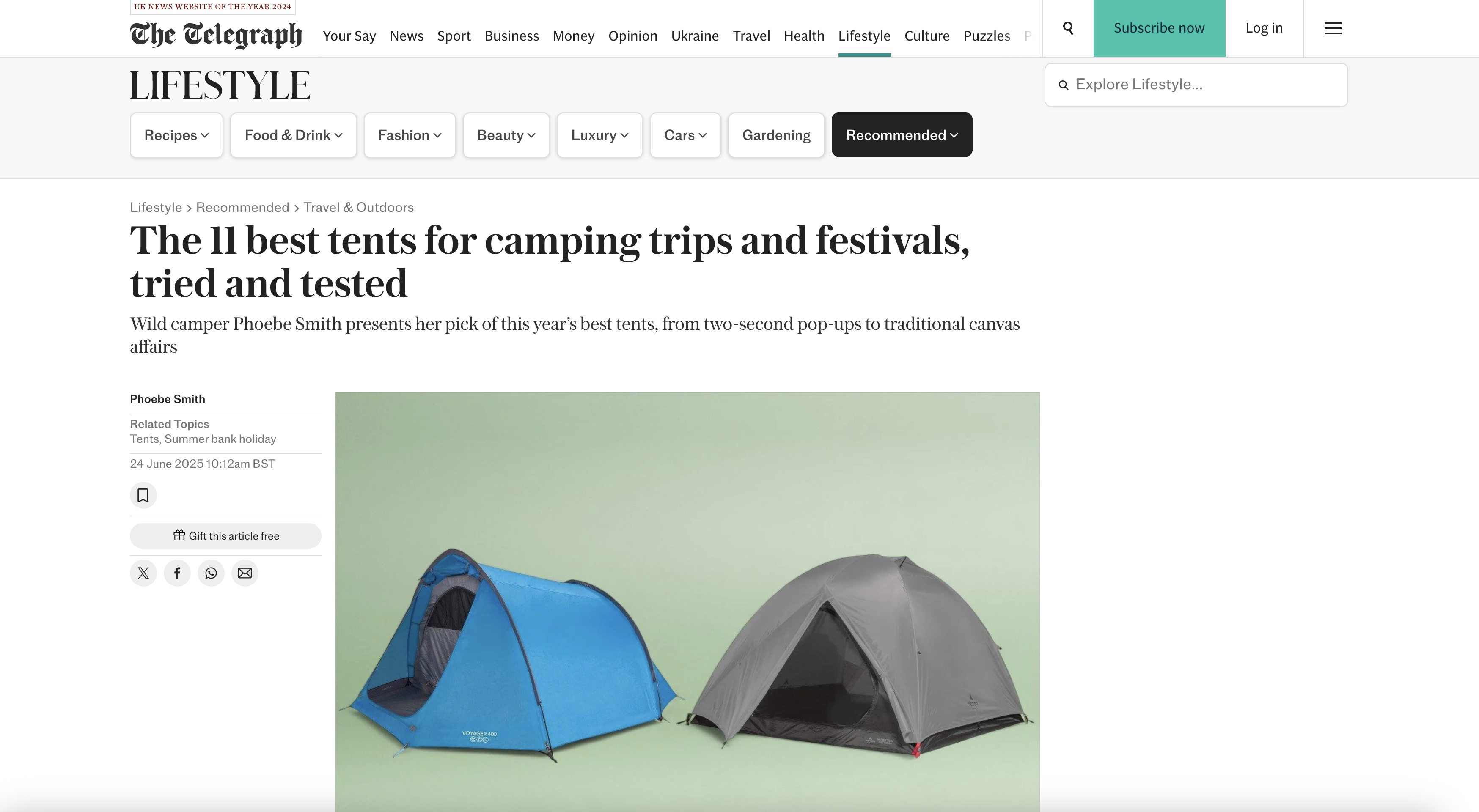
Now let’s look at the brand whose products are surfaced when asking for recommendations on things like 3 man tents:
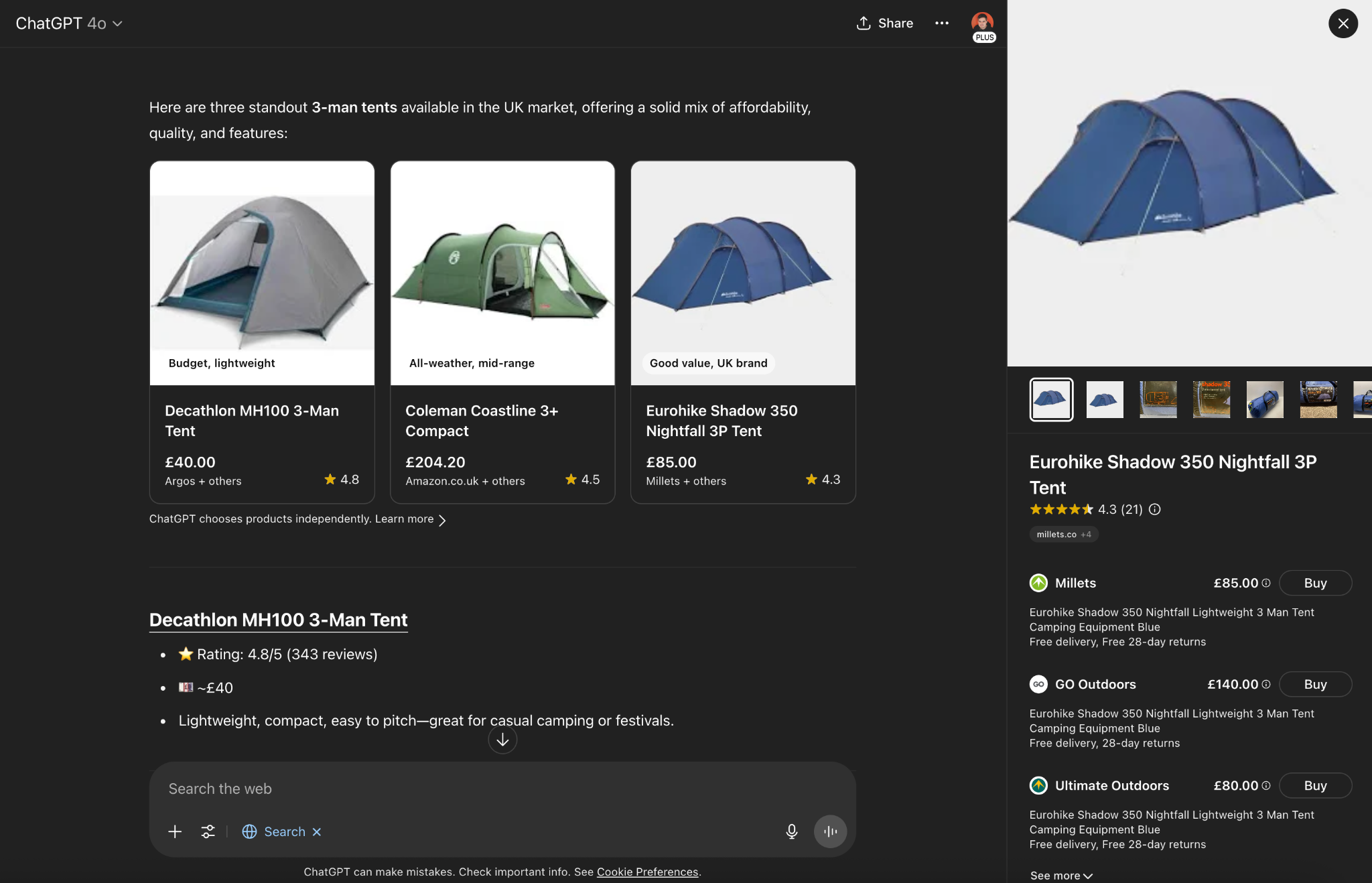
Yep, GO Outdoors are there!
More?
Another roundup we got the brand featured in; one for sleeping bags:
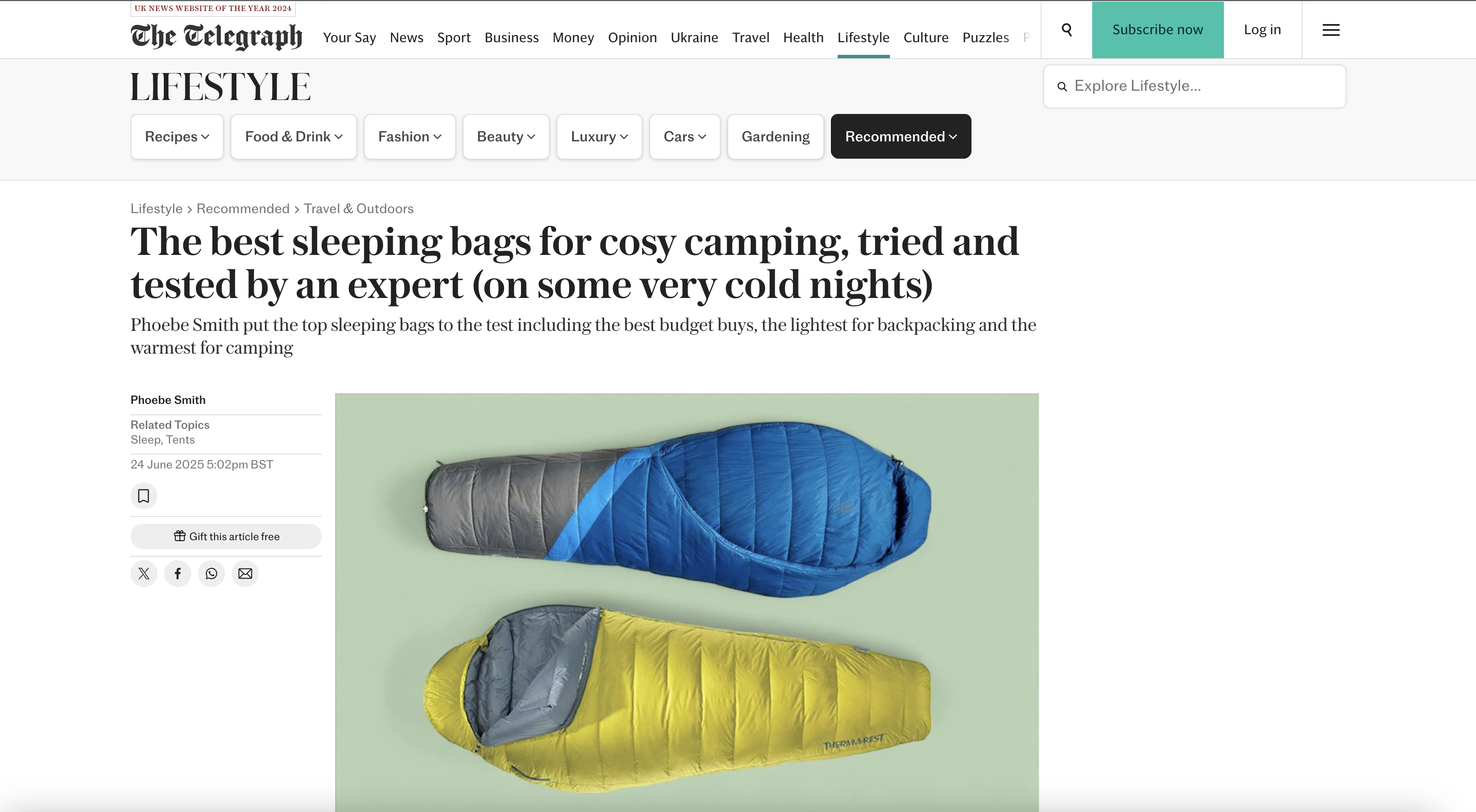
And look where is recommended when asked about the best summer sleeping bags?
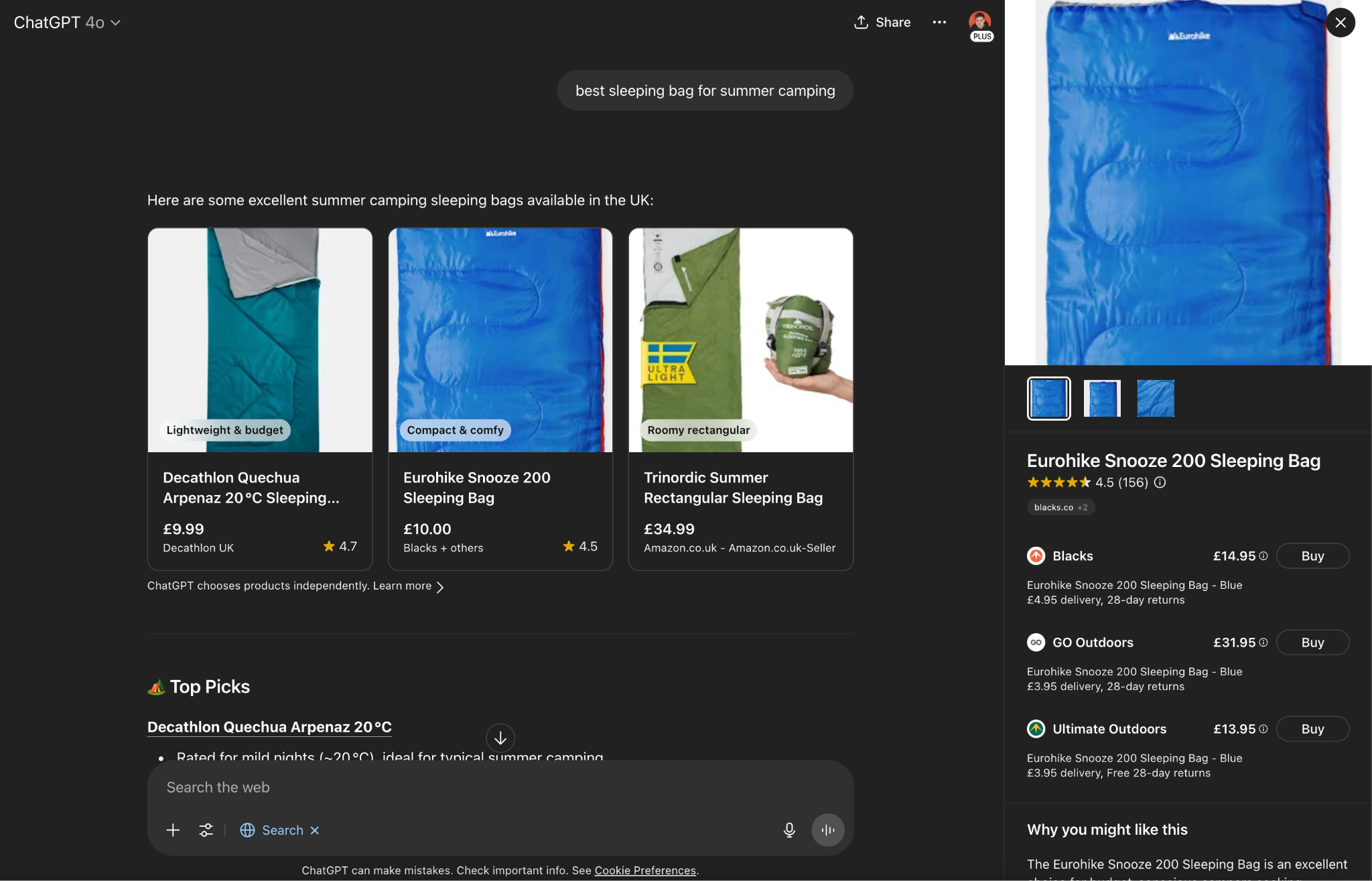
(Blacks is GO Outdoors’ sister company; we work across both and get the two brands and their products included in roundups like these. Getting both referenced is even more evidence this works).
Why Digital PR is the Most Strategic Lever You Can Pull to Influence AI Visibility
Digital PR isn’t just a nice-to-have. In this new era of AI-powered search, it’s one of the most strategic levers you can pull to influence whether or not your brand is recommended.
Why?
Because it directly shapes the signals that AI systems use to determine what to say, and who to recommend, when a user asks for advice, suggestions or guidance.
It’s how you get included in the sources LLMs cite when they browse the web in real time. Whether it’s Google’s AI Overviews, ChatGPT with search, or Perplexity, these tools pull from trusted sources. Earning media placements through PR is what puts your brand in those sources in the first place.
It’s also how you build the third-party credibility that LLMs increasingly rely on and use from their training data. You can’t be the only one saying you’re the best; that doesn’t cut it anymore.
AI systems are designed to detect and amplify consensus. They want to recommend businesses, products or experts that others are talking about in trusted contexts. That’s PR. That’s media coverage. That’s brand visibility on the sites that train the AI’s understanding of your reputation.
And even beyond that, digital PR is how you shape how these models talk about you. The training data they rely on, and the content they retrieve live, form the language and context for how your brand is described. When you show up in press coverage, explainers, reviews, and expert roundups, you influence how AI sees you, and the narrative it builds around your business.
Finally, it’s a key part of making your own brand more trustworthy.
When your brand is being mentioned, cited, and linked to from reputable sources, it boosts the perceived authority of your own domain. That makes it more likely that your site’s content is included as a cited source in the first place.
In short; digital PR is not just about links.
It’s about earning the brand signals that LLMs look for. It’s about becoming the brand that AI tools know, trust, and recommend.
And if you’re not actively shaping that story, someone else will.
Shape the Narrative or Be Written Out of It
We’re entering a new era of search; one where traditional SEO alone won’t keep you visible, and where digital PR has evolved from a support act to a tactic that takes a strategic lead.
AI-powered tools like ChatGPT, Google’s AI Overviews and AI Mode, and others are rewriting how information is surfaced, cited, and trusted. They recommend the brands they’ve seen, heard about, and come to trust; across the web, in the media, and in the data they’re trained on.
That’s why digital PR is so critical. It’s not just a traffic driver. It’s not just a link-building tactic. It’s how you earn presence, reputation, and authority in the sources AI is pulling from.
The brands that win in this next phase of search won’t be the ones with the most backlinks or the best content. They’ll be the ones consistently talked about in the right places, for the right reasons; and that’s exactly what digital PR delivers when it’s done strategically.
So if you care about visibility in 2025 and beyond, stop thinking in terms of just SERPs… and start thinking about the brand signals that shape AI visibility. Because whether you’re ready or not, your brand is already being judged by systems that don’t just care about what’s on your site, they care what’s being said about you.
Make sure it’s something worth repeating.



